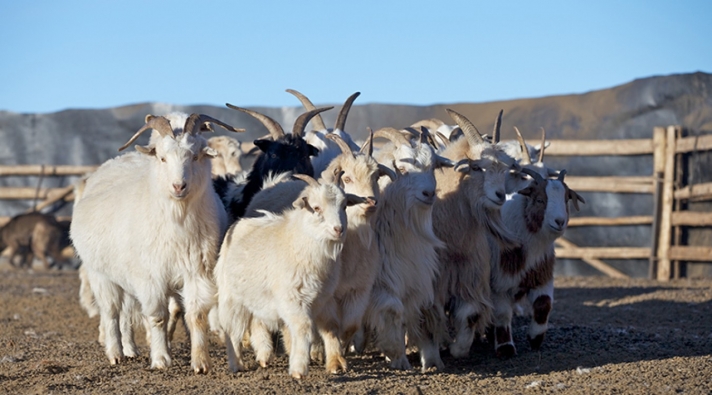Will their demands be met?

One of the largest contributors to climate change is the fashion and textile industry. It is already the time for us to discuss the direction of this sector like we do about getting rid of coal. However, who will be the leaders of this change? Dr. Sue id the Heriot Watt University believes that it will be the “z generation”. The generation born after the 1990s will soon become fashion designers and main consumers. As opposed to the exterior appearance and design of products, the generation z are more concerned with what is happening on the inside. According to a survey conducted by McKinsey&Company, 65 percent of the z generation take into consideration as to where and how the product is made before purchasing. Moreover 80 percent replied that they reject buying from controversial companies.
If so, then this is an important issue that the mongolian livestock sector should pay careful attention to as the producers of this. “The Sustainable Fibre Alliance (SFA) trains herders where they can herd eco-friendly to show this to the consumers and give the appropriate certification to the herders,” said Una Jones, the executive director of the organization.
Mongolians have been nomads for thousands of years and have co-existed with nature. Yet, both foreign and domestic organizations have begun to comment on whether the country has sustainable herding. This is because of climate change and pasture degradation. Furthermore, there is also news spread in foreign media that mongolians are exhibiting animal cruelty while combing their goats. Experts are saying this has caused a big hit to the cashmere market.
Throughout the past decade the Green Gold project of the Swiss Agency for Development and Cooperation, UNDP, SFA, and Veterinarians Without Borders have trained the herders to take the sustainability of their livestock and pasture into their own hands. The users want to be aware of the pasture, environment and livestock conditions. Therefore, it must be proven to the purchasers and the herders are required to meet the requirements. This will determine the future of the sector. Simon Cotton, CEO of Johnstons of Elgin, the largest cashmere company in Britain, mentioned that the company has been working towards this since 1997.
Then, what is the reality of this in the Mongolian plains? In the past 20 years, climate change has taken place in Mongolia rapidly according to Dr. B.Erdenetsetseg, director of the Department of Meteorology. According to a climate change index carried out by an international organization from 1993-2012, Mongolia is ranked at eight out of the most risked countries. The livestock heads have drastically been increasing since the 1990s and by 2018, there was 66.4 million heads of livestock. Despite this factor, the size of the pasture has decreased nine times. The pasture monitoring news of 2018 also show that 60 percent of pasture has changed.
The total textile production of the world is at 94.5 million tons. Cashmere production takes up only 0.3 percent. Director General to theLivestock Breeding Policy Coordination of the Ministry of Food, Agriculture and Light Industry D.Batusuren declared that for the main supplier of cashmere which are the Mongolian goats, it is necessary that the ministry, herders and all relevant parties work together. As of now, there are over 50 goats from certified breeds in 18 provinces and 73 soums. 13 types of certified breeds are being raised. This has started to be implemented starting in 2018. He also said that the Generic Resources act is in the process of registering traditional methods of breeding livestock and having it recognized all over the world. Mongolia has a traditional method of butchering livestock and does not show it to their kids. Just in the case of combing goats, Mongolian goats get better treatment than their western counterparts that are born and raised in fences. The nomadic goats roam the grasslands with their mothers freely since they day they are born. For this reason, they are frightened the first time that they are combed. Dr. Narantuya, Secretary General to the Research Institute for Animal Husbandry said that it is unfortunate to see how the advantages of herded livestock are being criticized as a negative aspect. If you don’t comb goats for cashmere, then they are at the risk of freezing to death during harsh storms. After the rain, their coats become crusty, and prevent the growth of new fibre. These are factors that are related to the climate of Mongolia. Specialists of the cashmere sector and herders explained that this should be explained the correct way to foreigners.
Production of quality cashmere is already reflected in the government policy towards herders and the Mongol livestock national program according to the Ministry of Food, Agriculture and Light Industry. B.Batkhuu, Director of the Department for Coordination of Policy Implementation in the Ministry explained that the SFA’s initiation and project to teach the herders in sustainability is in correlation with the government agenda. In order to show the quality of Mongolian cashmere to the world the Khaan Shirkhegt quality standard was introduced. The right to implement this standard was given to the Mongolian Cashmere Association and it is accepted in 33 countries. In order for sustainable herding and pasture, all the respective sides need to work together.
In 2018, the Mongolian Government approved the “cashmere” program. Within the last year, it created 1500 jobs and is leading in the cashmere sector. The first steps to successful changes will begin with this sector. If they walk side by side with the generation z, then they will move forward. If they don’t meet their demands, then they will fall. All this is up to those who are in the sector and it will depend on them.